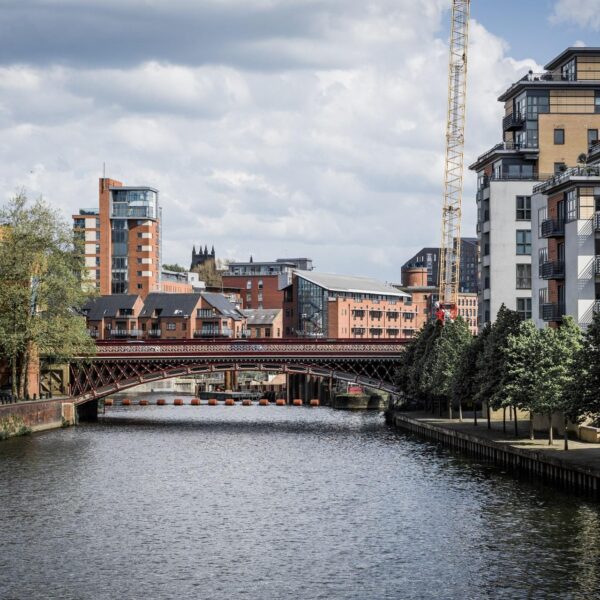Leeds General Infirmary, UK
Through close working with clinical staff, we’ve helped to deliver a future-proofed hospital design; instilling new ways of working and digital healthcare advances whilst delivering estate flexibility and a sense of connection and identity for patients and the workforce across the two hospitals.

The building will be designed to offer our patients modern, individual healthcare based on the most advanced treatments, technologies, innovation and research. It’s an ambitious, long-term development that will change the way we think about hospital care.
Dame Linda Pollard DBE DL Hon LLD, Chair
Who is the client?
Leeds General Infirmary, also known as the LGI, is a large teaching hospital based in the centre of Leeds, West Yorkshire, and is part of the Leeds Teaching Hospitals NHS Trust (LTH).
The challenge – meeting future population demands
LGI currently serves an immediate population of 770,000 and provides specialist regional care to up to 5.4 million people. By 2030, the local population is set to exceed 1 million, and the Trust must plan for significant demographic and epidemiological changes including an ageing population and increased mental health conditions.
The Trust are seeking to build two state-of-the-art new hospital buildings at the Leeds General Infirmary site to meet these demand pressures. They will deliver a range of adult health services and be the brand-new home for Leeds Children’s Hospital.
The buildings will be designed to offer patients modern, individual healthcare based on the most advanced treatments, technologies, innovation and research. It is also a major step in the development of an Innovation District for Leeds. The project received a share of £2.7 billion funding in the first wave of the UK Government’s Health Infrastructure Plan, its national programme of healthcare capital investment.
Finding a solution – robust stakeholder engagement and new models of care
As healthcare planners, we have led the production of clinical briefs and a revised Schedule of Accommodation for the adult element of the two new hospital buildings. We are also developing whole hospital policies across the two-hospital site.
It was critical to capture the knowledge of clinical teams and their social care colleagues, so we designed extensive and robust stakeholder engagement to plan future service provision.
The developments will serve separate purposes but need one overarching identity to instil a sense of pride and placemaking within the workforce and communities they serve.
Core to this will be using our methodology to deliver the right level of adjacencies, between key clinical areas and the provision of flexible zones to separate public, treatment and staff functions for improved internal circulation, privacy and connectivity with existing hospital wings.
By embedding with clinicians, using population modelling and best practice, we’ve mapped out improvements to current flows and pathways. By making changes to accommodation and adjacencies, we can provide more positive outcomes and accommodate future demand.
To resolve demand pressures, we are utilising new models of care to use the estate efficiently and optimise care delivery. Integrating digital technologies throughout is also key, with LTH at the forefront of the digital revolution in healthcare – recently undertaking the robotic process automation (RPA) of digital records, for example.
We have also incorporated our expertise in ‘intelligent hospitals’ through standardising repeatable designs within the SoA where possible. Based on our experience, this can reduce construction costs by over 14%.
What was the outcome?
Our work helps to provide the environment for new ways of working, adopt technological advances whilst delivering flexibility. We have also designed more efficient connections between NHS and local authority services, in an integrated model of care.
We’ve also used previous experience of fully integrating digital and physical environments to optimise service efficiencies and future proof the estate, through a flexible schedule of accommodation that will improve the resilience of the hospital buildings.
In the longer term, this approach creates capital and revenue savings to facilitate spending on community-based preventative services. This helps the Trust in its ambition to become the most financially efficient teaching hospital in England.
More info: https://www.leedsth.nhs.uk/about-us/building-the-leeds-way/
